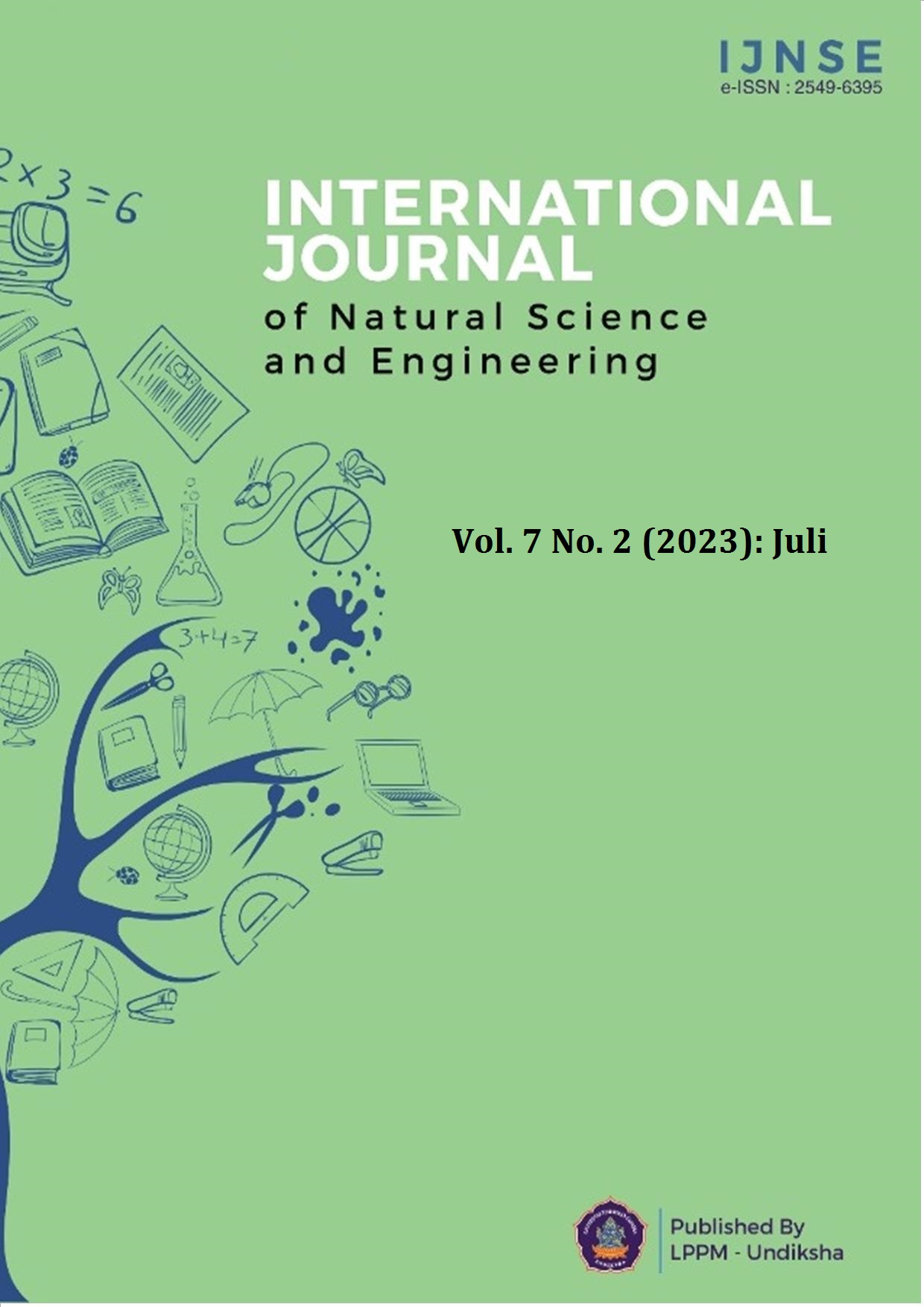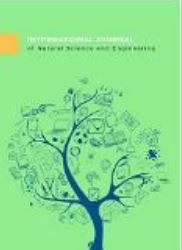Leucocyte Value as a Signs of Microvascular Inflammation in Type 2 Diabetes Mellitus Patients
DOI:
https://doi.org/10.23887/ijnse.v7i2.62440Keywords:
Leukocyte Count, Diabetes Mellitus Type 2, InflammationAbstract
Problems in the pathogenesis of Type 2 Diabetes Mellitus (T2DM) to complications are often overlooked, and routine blood tests are rarely performed in individuals with T2DM. Inflammation is an important early sign for detecting complications. One of the factors that can be used as an indicator of inflammation is the value of leukocytes. The purpose of this study was to assess leukocyte counts in patients with T2DM as a sign of inflammation in T2DM patients. This study used a cross-sectional approach method, with data analyzed descriptively and correlative using SPSS software. The subjects of the study involved residents assisted by the Kota Baru and Kalibaru Health Centers who suffered from DMT2 in the period from January to February 2019. The results of the Pearson test showed a value of p = 0.49, which indicated that there was no significant relationship between leucocytosis and blood glucose levels. The conclusion of this study is that the high number of leukocytes in T2DM patients is thought not to be caused by high blood glucose levels, but may be influenced by other factors related to the development of complications of T2DM disease. This research has important implications in understanding the pathogenesis and prevention of complications of T2DM.
References
Alain, C. B., Rostin, M. M. M., Joël, K. N. N., Hypolite, M. M., Donatien, K. N. N., Koffi, T. A., & Hippolyte, S. N. T. (2021). Improving Clinical Laboratory Quality through Reduction of Tests’ Turnaround Time in Democratic Republic of the Congo: Key Strategies. Journal of Biosciences and Medicines, 9(10), 96–116. https://doi.org/10.4236/jbm.2021.910009. DOI: https://doi.org/10.4236/jbm.2021.910009
Amelia, R. (2021). Deteksi Dini Penyakit Gout Pada Lansia di Wilayah Kerja Puskesmas Kalibaru Bekasi. Dinamisia: Jurnal Pengabdian Kepada Masyarakat, 5(2), 494–499. https://doi.org/10.31849/dinamisia.v5i2.4250. DOI: https://doi.org/10.31849/dinamisia.v5i2.4250
Amelia, R., Arshita, N., Fajriah, S. N., Astuti, C. V. D., & Fitri, I. N. (2019). A sign of acute inflammation in type 2 diabetes mellitus patients in Kota Baru and Kalibaru subdistricts, Bekasi. Acta Biochimica Indonesiana, 2(2), 45–51. https://doi.org/10.32889/actabioina.v2i2.38. DOI: https://doi.org/10.32889/actabioina.v2i2.38
Amelia, R., Beandrade, M. U., & Hasmar, W. N. (2021). Formulation and Physical Characterization of Black Soybean (Glycine Max L.) Variety of Detam II Tablets with Dry Granulation Method. International Journal of Natural Science and Engineering, 5(1), 30–38. https://doi.org/10.23887/ijnse.v5i1.33441. DOI: https://doi.org/10.23887/ijnse.v5i1.33441
An, J., Nichols, G. A., Qian, L., Munis, M. A., Harrison, T. N., Li, Z., & Reynolds, K. (2021). Prevalence and incidence of microvascular and macrovascular complications over 15 years among patients with incident type 2 diabetes. BMJ Open Diabetes Research and Care, 9(1). https://doi.org/10.1136/bmjdrc-2020-001847. DOI: https://doi.org/10.1136/bmjdrc-2020-001847
Bajpai, A., & Tilley, D. G. (2018). The role of leukocytes in diabetic cardiomyopathy. Frontiers in Physiology, 9, 1547. https://doi.org/10.3389/fphys.2018.01547 DOI: https://doi.org/10.3389/fphys.2018.01547
Beandrade, M. U., Amelia, R., & Hasmar, W. N. (2022). Gambaran Histologi Pankreas Tikus dengan Diabetes Melitus Tipe 2 yang Diberikan Tablet Kedelai Detam II. Jurnal Kedokteran Dan Kesehatan, 18(2), 240–248. https://doi.org/10.24853/jkk.18.2.240-248.
Berbudi, A., Rahmadika, N., Tjahjadi, A. I., & Ruslami, R. (2020). Type 2 diabetes and its impact on the immune system. Current Diabetes Reviews, 16(5), 442–449. https://doi.org/10.2174/1573399815666191024085838. DOI: https://doi.org/10.2174/1573399815666191024085838
Burgos-Morón, E., Abad-Jiménez, Z., Martinez de Maranon, A., Iannantuoni, F., Escribano-López, I., López-Domènech, S., & Víctor, V. M. (2019). Relationship between oxidative stress, ER stress, and inflammation in type 2 diabetes: the battle continues. Journal of Clinical Medicine, 8(9), 1385. https://doi.org/10.3390/jcm8091385. DOI: https://doi.org/10.3390/jcm8091385
Campello, R. S., Fátima, L. A., Barreto-Andrade, J. N., Lucas, T. F., Mori, R. C., Porto, C. S., & Machado, U. F. (2017). Estradiol-induced regulation of GLUT4 in 3T3-L1 cells: involvement of ESR1 and AKT activation. Journal of Molecular Endocrinology, 59(3), 257–268. https://doi.org/10.1530/JME-17-0041. DOI: https://doi.org/10.1530/JME-17-0041
Chawla, A., Chawla, R., & Jaggi, S. (2016). Microvasular and macrovascular complications in diabetes mellitus: Distinct or continuum? Indian Journal of Endocrinology and Metabolism, 20(4), 546. https://doi.org/10.4103/2230-8210.183480. DOI: https://doi.org/10.4103/2230-8210.183480
Daryabor, G., Atashzar, M. R., Kabelitz, D., Meri, S., & Kalantar, K. (2020). The Effects of Type 2 Diabetes Mellitus on Organ Metabolism and the Immune System. Frontiers in Immunology, 11, 1582. https://doi.org/10.3389/fimmu.2020.01582. DOI: https://doi.org/10.3389/fimmu.2020.01582
Dayrit, M. M., Lagrada, L. P., Picazo, O. F., Pons, M. C., & Villaverde, M. C. (2018). The Philippines health system review. Health Systems in Transition, 8(2). https://iris.who.int/handle/10665/274579.
Gan, L., Liu, Z., Feng, F., Wu, T., Luo, D., Hu, C., & Sun, C. (2018). Foxc2 coordinates inflammation and browning of white adipose by leptin-STAT3-PRDM16 signal in mice. International Journal of Obesity, 42(2), 252–259. https://doi.org/10.1038/ijo.2017.208. DOI: https://doi.org/10.1038/ijo.2017.208
Gebreyes, M., Sisay, A., Tegen, D., Asnake, A., & Wolde, M. (2020). Evaluation of Laboratory Performance, Associated Factors and Staff Awareness Towards Achieving Turnaround Time in Tertiary Hospitals, Ethiopia. Ethiopian Journal of Health Sciences, 30(5). https://doi.org/10.4314/ejhs.v30i5.17. DOI: https://doi.org/10.4314/ejhs.v30i5.17
Gedebjerg, A., Almdal, T. P., Berencsi, K., Rungby, J., Nielsen, J. S., Witte, D. R., & Thomsen, R. W. (2018). Prevalence of micro- and macrovascular diabetes complications at time of type 2 diabetes diagnosis and associated clinical characteristics: A cross-sectional baseline study of 6958 patients in the Danish DD2 cohort. Journal of Diabetes and Its Complications, 32(1), 34–40. https://doi.org/10.1016/j.jdiacomp.2017.09.010. DOI: https://doi.org/10.1016/j.jdiacomp.2017.09.010
Gregorio, K. C. R., Laurindo, C. P., & Machado, U. F. (2021). Estrogen and glycemic homeostasis: the fundamental role of nuclear estrogen receptors ESR1/ESR2 in glucose transporter GLUT4 regulation. Cells, 10(1), 99. https://doi.org/10.3390/cells10010099. DOI: https://doi.org/10.3390/cells10010099
Halim, M., & Halim, A. (2019). The effects of inflammation, aging and oxidative stress on the pathogenesis of diabetes mellitus (type 2 diabetes). Diabetes & Metabolic Syndrome: Clinical Research & Reviews, 13(2), 1165–1172. https://doi.org/10.1016/j.dsx.2019.01.040. DOI: https://doi.org/10.1016/j.dsx.2019.01.040
Hurrle, S., & Hsu, W. H. (2017). The etiology of oxidative stress in insulin resistance. Biomedical Journal, 40(5), 257–262. https://doi.org/10.1016/j.bj.2017.06.007. DOI: https://doi.org/10.1016/j.bj.2017.06.007
Kiswari, R. (2014). Hematologi & Transfusi. Erlangga.
Kizilgul, M., Sencar, E., Bekir, U. C. A. N., Beysel, S., Ozcelik, O., Ozbek, M., & Cakal, E. (2018). Components of the Complete Blood Count in Type 2 Diabetes Mellitus with Inadequate Glycemic Control. Dicle Tıp Dergisi, 45(2), 113–120. https://doi.org/10.5798/dicletip.410811. DOI: https://doi.org/10.5798/dicletip.410811
Lee, H. R., Shin, J., Han, K., Chang, J., Jeong, S. M., Chon, S. J., & Shin, D. W. (2021). Obesity and risk of diabetes mellitus by menopausal status: A nationwide cohort study. Journal of Clinical Medicine, 10(21), 5189. https://doi.org/10.3390/jcm10215189. DOI: https://doi.org/10.3390/jcm10215189
Li, N., Liu, F., Yang, P., Xiong, F., Yu, Q., Li, J., & Wang, C. Y. (2019). Aging and stress induced β cell senescence and its implication in diabetes development. Aging (Albany NY), 11(21), 9947. https://doi.org/10.18632/aging.102432. DOI: https://doi.org/10.18632/aging.102432
Mahendradhata, Y., Trisnantoro, L., Listyadewi, S., Soewondo, P., Marthias, T., Harimurti, P., & Prawira, J. (2017). The Republic of Indonesia health system review. Health Systems in Transition, 7(1). https://iris.who.int/handle/10665/254716.
Milosevic, D., & Panin, V. L. (2019). Relationship between hematological parameters and glycemic control in type 2 diabetes mellitus patients. Journal of Medical Biochemistry, 38(2), 164. https://doi.org/10.2478/jomb-2018-0021. DOI: https://doi.org/10.2478/jomb-2018-0021
Nam, M. J., Kim, H., Choi, Y. J., Cho, K. H., Kim, S. M., Roh, Y. K., & Kim, D. H. (2022). A Longitudinal Retrospective Observational Study on Obesity Indicators and the Risk of Impaired Fasting Glucose in Pre-and Postmenopausal Women. Journal of Clinical Medicine, 11(10), 2795. https://doi.org/10.3390/jcm11102795. DOI: https://doi.org/10.3390/jcm11102795
Narjis, M., Noreen, M., Safi, S. Z., Ilahi, N. E., Alomar, S. Y., & Alkhuriji, A. F. (2021). Cross talk between complete blood count and progression of type II diabetes mellitus. Journal of King Saud University-Science, 33(6), 101492. https://doi.org/10.1016/j.jksus.2021.101492. DOI: https://doi.org/10.1016/j.jksus.2021.101492
Park, S. H., & Lee, H. (2022). Obesity, leukocytes, and high-sensitivity C-reactive protein biomarkers associated with type 2 diabetes mellitus in south Korean adults. Iranian Journal of Public Health, 51(8), 1827. https://doi.org/10.18502/ijph.v51i8.10268. DOI: https://doi.org/10.18502/ijph.v51i8.10268
Paschou, S. A., & Papanas, N. (2019). Type 2 diabetes mellitus and menopausal hormone therapy: an update. Diabetes Therapy, 10(6), 2313–2320. https://doi.org/10.1007/s13300-019-00695-y. DOI: https://doi.org/10.1007/s13300-019-00695-y
Paul, S., Ali, A., & Katare, R. (2020). Molecular complexities underlying the vascular complications of diabetes mellitus – A comprehensive review. Journal of Diabetes and Its Complications, 34(8). https://doi.org/10.1016/j.jdiacomp.2020.107613. DOI: https://doi.org/10.1016/j.jdiacomp.2020.107613
Prasad, M., Chen, E. W., Toh, S. A., & Gascoigne, N. R. (2020). Autoimmune responses and inflammation in type 2 diabetes. Journal of Leukocyte Biology, 107(5), 739–748. https://doi.org/10.1002/JLB.3MR0220-243R. DOI: https://doi.org/10.1002/JLB.3MR0220-243R
Ritchie, R. H., & Abel, E. D. (2020). Basic Mechanisms of Diabetic Heart Disease. Circulation Research, 126(11), 1501–1525. https://doi.org/10.1161/CIRCRESAHA.120.315913. DOI: https://doi.org/10.1161/CIRCRESAHA.120.315913
Seo, Y. H., & Shin, H. Y. (2021). Relationship between hs-CRP and HbA1c in Diabetes Mellitus Patients: 2015–2017 Korean National Health and Nutrition Examination Survey. Chonnam Medical Journal, 57(1), 62. https://doi.org/10.4068/cmj.2021.57.1.62. DOI: https://doi.org/10.4068/cmj.2021.57.1.62
Stuenkel, C. A. (2017). Menopause, hormone therapy and diabetes. Climacteric, 20(1), 11–21. https://doi.org/10.1080/13697137.2016.1267723. DOI: https://doi.org/10.1080/13697137.2016.1267723
Sun, D., Zhou, T., Heianza, Y., Li, X., Fan, M., Fonseca, V. A., & Qi, L. (2019). Type 2 diabetes and hypertension: a study on bidirectional causality. Circulation Research, 124(6), 930–937. https://doi.org/10.1161/CIRCRESAHA.118.314487. DOI: https://doi.org/10.1161/CIRCRESAHA.118.314487
Sung, K. C., Ryu, S., Sung, J. W., Kim, Y. B., Won, Y. S., Cho, D. S., & Liu, A. (2017). Inflammation in the Prediction of Type 2 Diabetes and Hypertension in Healthy Adults. Archives of Medical Research, 48(6), 535–545. https://doi.org/10.1016/j.arcmed.2017.11.010. DOI: https://doi.org/10.1016/j.arcmed.2017.11.010
Thayibah, R., Ariyanto, Y., & Ramani, A. (2018). Hiperurisemia Pada Remaja di Wilayah Kerja Puskesmas Arjasa Kabupaten Situbondo Hyperuricemia in Adolescents (16-24 Years Old) in Arjasa Primary Health Center, Situbondo Regency. Pustaka Kesehatan, 6(1), 38–45. https://doi.org/10.19184/pk.v6i1.6765. DOI: https://doi.org/10.19184/pk.v6i1.6765
Tong, Y., Xu, S., Huang, L., & Chen, C. (2022). Obesity and insulin resistance: Pathophysiology and treatment. Drug Discovery Today, 27(3), 822–830. https://doi.org/10.1016/j.drudis.2021.11.001. DOI: https://doi.org/10.1016/j.drudis.2021.11.001
Wondmkun, Y. T. (2020). Obesity, insulin resistance, and type 2 diabetes: associations and therapeutic implications. Diabetes, Metabolic Syndrome and Obesity, 13, 3611–3616. https://doi.org/10.2147/DMSO.S275898. DOI: https://doi.org/10.2147/DMSO.S275898
Wronka, M., Krzemińska, J., Młynarska, E., Rysz, J., & Franczyk, B. (2022). The influence of lifestyle and treatment on oxidative stress and inflammation in diabetes. International Journal of Molecular Sciences, 23(24), 15743. https://doi.org/10.3390/ijms232415743. DOI: https://doi.org/10.3390/ijms232415743
Xia, C., Rao, X., & Zhong, J. (2017). Role of T Lymphocytes in Type 2 Diabetes and Diabetes-Associated Inflammation. Journal of Diabetes Research, 2017. https://doi.org/10.1155/2017/6494795. DOI: https://doi.org/10.1155/2017/6494795
Yan, H., Yang, W., Zhou, F., Li, X., Pan, Q., Shen, Z., & Guo, S. (2019). Estrogen improves insulin sensitivity and suppresses gluconeogenesis via the transcription factor Foxo1. Diabetes, 68(2), 291–304. https://doi.org/10.2337/db18-0638. DOI: https://doi.org/10.2337/db18-0638
Yaribeygi, H., Sathyapalan, T., Atkin, S. L., & Sahebkar, A. (2020). Molecular mechanisms linking oxidative stress and diabetes mellitus. Oxidative Medicine and Cellular Longevity, 2020. https://doi.org/10.1155/2020/8609213. DOI: https://doi.org/10.1155/2020/8609213
Zbaar, S. A., Sarhat, E. R., & Khalaf, S. J. (2022). Association of C-Reactive Protein with Risk of Complications of diabetic nephropathy. Egyptian Journal of Chemistry, 65(8), 483–487. https://doi.org/10.21608/EJCHEM.2021.99957.4868. DOI: https://doi.org/10.21608/ejchem.2021.99957.4868
Zhang, Y., Jin, W., Zhang, D., Lin, C., He, H., Xie, F., & Wu, Y. (2022). TNF-α antagonizes the effect of leptin on insulin secretion through FOXO1-dependent transcriptional suppression of LepRb in INS-1 cells. Oxidative Medicine and Cellular Longevity, 2022. https://doi.org/10.1155/2022/9142798. DOI: https://doi.org/10.1155/2022/9142798
Zhu, L., Martinez, M. N., Emfinger, C. H., Palmisano, B. T., & Stafford, J. M. (2014). Estrogen signaling prevents diet-induced hepatic insulin resistance in male mice with obesity. American Journal of Physiology-Endocrinology and Metabolism, 306(10), E1188–E1197. https://doi.org/10.1152/ajpendo.00579.2013. DOI: https://doi.org/10.1152/ajpendo.00579.2013
Zhu, M., Liu, X., Liu, W., Lu, Y., Cheng, J., & Chen, Y. (2021). β cell aging and age-related diabetes. Aging (Albany NY), 13(5), 7691. https://doi.org/10.18632/aging.202593. DOI: https://doi.org/10.18632/aging.202593





